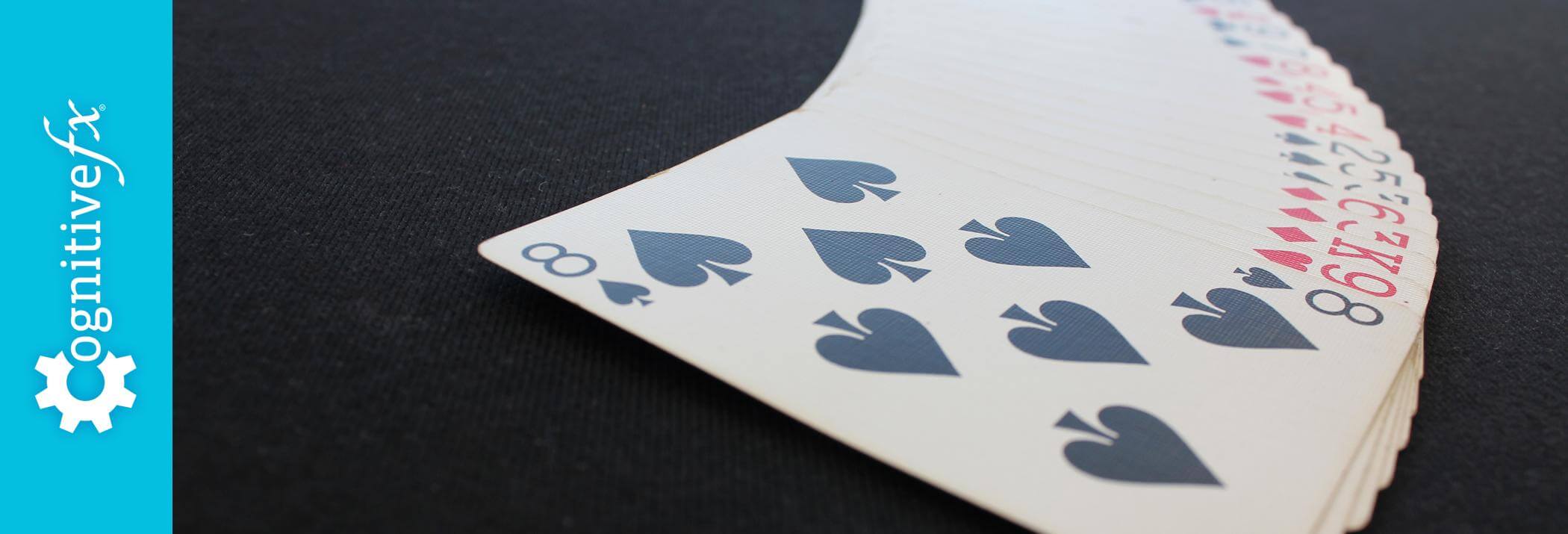If you’ve had a concussion (or two, or three … ), there’s a good chance someone told you to rest in a dark room and do nothing until your symptoms go away. But research over the past few years has revealed that resting in a dark room (known as “cocooning”) is not the best way to treat a concussion.
And for up to 30% of concussion patients whose symptoms do not go away with time and rest, that advice results in impatience, frustration, wasted time, and possibly worsening of symptoms. Fortunately, there are strategies you can use at home, and treatment centers you can go to for help. While not everyone with persistent post-concussion symptoms (also known as post-concussion syndrome) experiences a full recovery, patients can experience significant symptom reduction and improved quality of life from the right treatment program.
You can recover from post-concussion syndrome with the right toolset. Doing cognitive exercises at home is not enough to cause that recovery alone, but it can certainly help. Whether you’re waiting to start treatment, are undergoing cognitive rehabilitation, or are post treatment and looking for ways to keep your brain engaged, these exercises will help.
If your symptoms haven’t gone away after a brain injury, you’re not alone. But you don’t have to live with those symptoms forever: 95% of our patients show statistically verified restoration of brain function after treatment. To learn whether you’re eligible for treatment, schedule a consultation.
Note: Any data relating to brain function mentioned in this post is from our first generation fNCI scans. Gen 1 scans compared activation in various regions of the brain with a control database of healthy brains. Our clinic is now rolling out second-generation fNCI which looks both at the activation of individual brain regions and at the connections between brain regions. Results are interpreted and reported differently for Gen 2 than for Gen 1; reports will not look the same if you come into the clinic for treatment.
Why Do Cognitive Exercises for Post-Concussion Syndrome Work?
To understand why cognitive exercises are helpful for post-concussion patients, you first have to understand what’s causing symptoms in the first place.
A concussion can be caused by a direct blow to the head, jostling of the brain, or whiplash. When the brain hits the skull, the head trauma can result in swelling and inflammation. During the first few days of recovery, that inflammation can prevent your brain from using certain communication pathways the way it normally would.
For most people, those pathways resume working as normal after a week or two. But for patients with lingering post-concussion symptoms, the brain gets so used to routing around areas affected by the head injury that it keeps doing so even after initial recovery.
Think of a concussion like a massive storm: While the storm is raging, you have to avoid areas with high winds and flooding. When the storm clears, some of those areas will be accessible immediately (if perhaps a little worse for wear). But in other places, there might be washed-out bridges, traffic lights that aren’t working, and other damage that only a repair crew can fix. You might be able to get to your destination, but it will be slower and harder each time you need to pass through those damaged roads.
In terms of your brain’s communication “highways,” that means your brain is routing blood flow and information around the damaged areas. That drains energy and takes longer, resulting in a slew of persistent symptoms that vary from patient to patient. We are able to pinpoint where that dysfunction occurs by using functional MRI to look at your neurovascular coupling (i.e., the connection between your neurons and the blood vessels that bring them resources).
Restoring healthy neurovascular coupling in your brain is possible, but your brain needs the right push to recover via its innate healing ability, known as neuroplasticity. Not just anything will engage neuroplasticity, but learning new things, solving challenges, etc. can encourage it.
By the way — our EPIC treatment program is carefully designed to engage your brain’s neuroplasticity to recover after a mild traumatic brain injury (mTBI). Schedule a consultation to discuss whether your injury is one we can assess and treat.
Now, to answer the initial question: Why are cognitive exercises helpful post-injury? Cognitive exercises help you, metaphorically speaking, stretch your brain muscles. Problem-solving, especially when the task at hand is difficult and new, helps your brain re-establish connections that may have fallen out of use (or are simply working poorly) after injury.
How to Get the Most Out of Cognitive Exercises
When you do cardio exercise, there is a cascade of chemicals in your brain that help it perform better. This cascade is called the post-exercise cognitive boost (PECB). It doesn’t last forever, but combining that boost with cognitive exercises is more effective.
We recommend doing roughly 30 minutes of aerobic exercise (cardio) before cognitive exercises. Make sure you get your heart rate up! If some of your symptoms are aggravated by exercise, read our guide to exercising safely after a concussion.
Even if exercise is unpleasant, it’s worth doing safely. A study run by Dr. John Leddy demonstrated that subsymptom threshold exercise training is extremely beneficial for those suffering from physical and cognitive symptoms after a concussion. The key is staying below the point where your symptoms start to spike (“subsymptom threshold”).
17 Cognitive Exercises for Post-Concussion Syndrome
Now that you know why cognitive exercises are helpful and how to make the most of them, we’ll go through a list of brain games you can play. We’ve separated the list into two categories: exercises and games you can play alone, and ones you’ll need a friend to play.
Note: Variations of these games can be found in mobile phone app stores. We haven’t used them, so we won’t make recommendations here. But if you prefer playing brain games on your phone, there are definitely options available.
Brain Games You Can Play Alone
1. Card Sorting
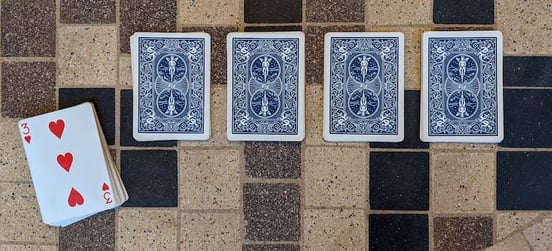
- Difficulty: Low to medium
- Good for: Attention, memory
Take a 50-card deck and find the ace for each suit. Shuffle the other cards. Choose an order from left to right of each ace (for example, hearts, clubs, diamonds, spades). Give yourself a few seconds to memorize the order, then turn the aces face down.
Take the deck of cards and draw one card at a time. Look at each card you draw, then sort it face down according to where you think the matching suit is. At the end, your goal is to have all the clubs in the pile for clubs, all the diamonds with other diamonds, and so forth.
Time yourself and see how quickly you can sort the cards. If you have a friend or helper, try having them give you small cognitive tasks at the same time. For example, they might say a word, and you have to say the antonym (opposite) of that word — all while continuing to sort the cards. For example, your friend might say, “hot,” so you would need to say, “cold.”
Each time you finish the exercise, you can turn the piles over to see how many cards you got right — and how many you missorted.
2. Boggle
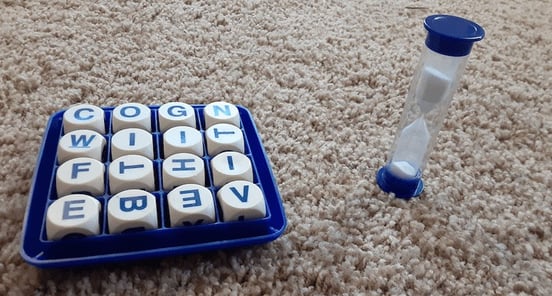
- Difficulty: Low to medium
- Good for: Language, processing speed
Boggle is a game of finding words out of a 4x4 or 5x5 matrix of letters. You look for ways to connect adjacent letters into a word (cardinal directions and diagonal are both allowed). The goal is to write down as many unique words as you can before time runs out. While it’s the most fun to play Boggle against friends, there are solo versions that you can play online.
If you want to play online, start with Wordtwist, PuzzleBaron’s take on the game. You can compete against other online players (via a high score system) and see which words people have submitted for the puzzle when you’re out of time (but many of those scores are absurdly high, so don’t take it too hard if you don’t make the board).
Note that to submit words on Wordtwist, you’ll need to click on the first letter of the word you want to spell, use your mouse to hover in order over the other letters, then click the final letter.
3. SET
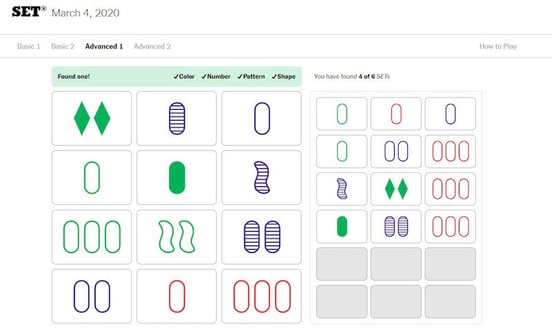
- Difficulty: Easy to hard
- Good for: Vision, executive function
While there is a physical card game you can play with friends, SET is available to play for free on the NY Times website.
SET is a game of grouping shapes based on four characteristics: color, pattern, shape, and number. Each SET consists of three cards. For each characteristic on the card, the set must have a) all the same ones or b) all different ones.
For example, in the picture above, the player has identified four out of six SETs (seen on the right side of the image). The first set consists of a) only ovals, b) all different colors, c) only empty patterns, and d) only singles. The third SET down, on the other hand, includes exclusively different items:
- A single, blue, lined squiggle
- Two green, solid diamonds
- Three red, empty ovals.
In other words, the color, shape, pattern, and number for each card is different from the other two cards in the SET.
SET can be confusing the first couple of times you try it, but once you’re used to the conditions (all the same or none the same), it’s a nice brain workout.
4. Tangrams
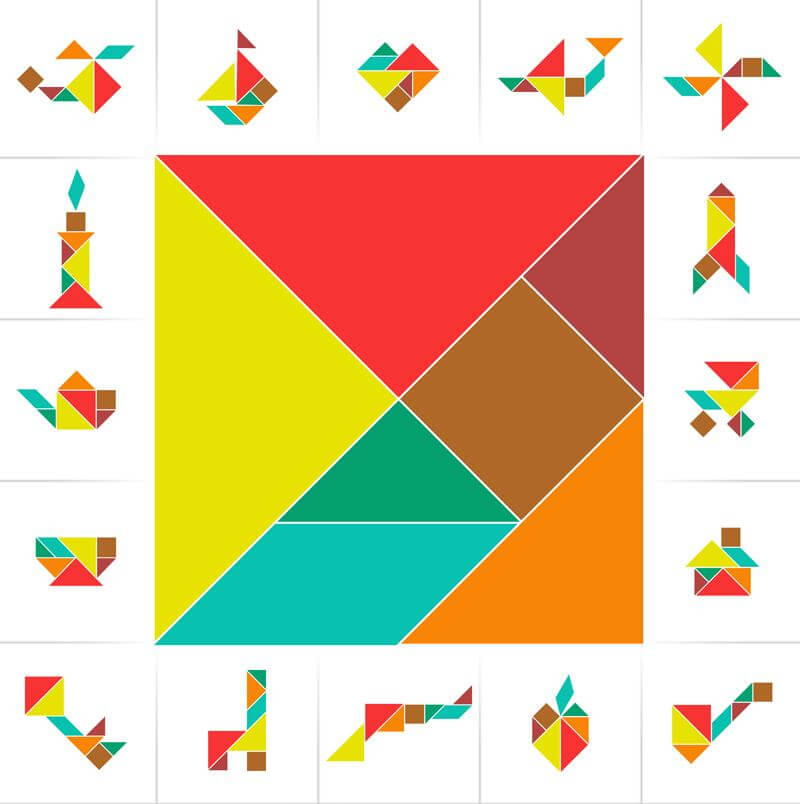
- Difficulty: Low to high
- Good for: Vision, executive
Tangrams are physical puzzles. You start with a specified number of shapes (squares, triangles, and a rhombus) and an image. You have to figure out how to arrange them to make the final puzzle shape.
You can purchase tangram blocks or print some on paper. There are hundreds of patterns scattered across the internet. You can print paper tangrams from this site to get started.
5. Hart Chart Decoding
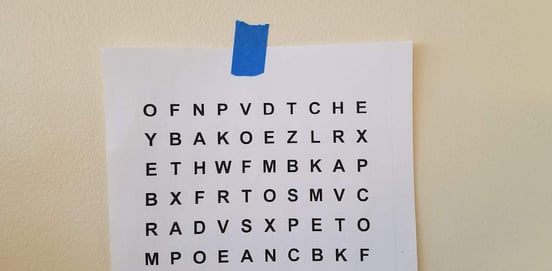
- Difficulty: Low
- Good for: Language, oculomotor function
Hart Chart decoding is fairly easy as long as you don’t have significant vision problems. That said, it’s a good exercise for your eyes and involves a little cognitive work, too.
To complete this exercise, tape the Hart Chart (the chart of letters provided here) on a wall a few feet away from where you are sitting. Have someone type a sentence into the generator on hartchartdecoding.com and print out the puzzle. If you don’t have anyone to do this for you, the site provides a few pre-made puzzles.
Next, use the coordinates on the puzzle to find the letter that belongs in the empty spot (as illustrated above). Repeat for all empty spaces to reveal the message.
6. Rush Hour
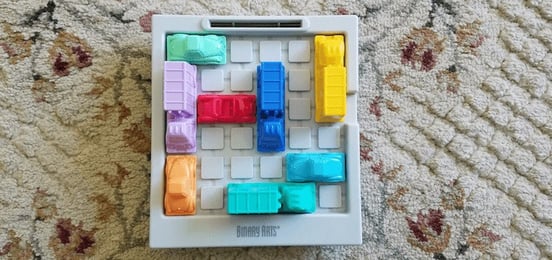
- Difficulty: Low to high
- Good for: Executive function
Rush Hour is a game in which you attempt to move a little red car off the game grid — but you have to move the cars blocking it in just the right order to do so. It really is best to purchase the official Thinkfun game so that you can manipulate the cars by hand and according to the original game rules. Card sets come with gradually increased difficulty so you can learn on “beginner” or “intermediate” and work your way up to “expert” or “grandmaster.”
7. Digital Collectible Card Games
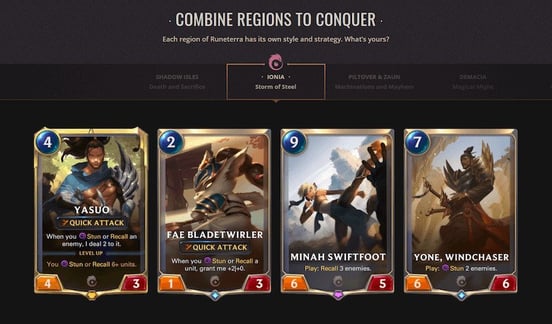
- Difficulty: Medium to hard
- Good for: Executive functioning, processing speed, memory
Free digital collectible card games like Legends of Runeterra (currently in beta) or Hearthstone have a significant learning curve but can be a fun cognitive endeavor.
The general concept is that you acquire digital cards with different effects on the game. You put those cards into decks (according to a few rules, of course) and then play those decks against AI or human opponents. It requires planning, learning the cards and how they can best be used, and reacting in real time (and with a time limit) to what your opponent does.
Hearthstone has been around for several years. The tutorials make it easy to get started, but gameplay against seasoned players is difficult until you’ve gotten enough cards. Acquiring those cards can be a grind.
Legends of Runeterra, on the other hand, doesn’t have as much content for completely new players to learn or acquire, but has fewer cards and less experienced players, so the overall learning curve is lower (until the developers expand the game). Gameplay requires a little more attentiveness than Hearthstone (which is turn-based) because every move you make gives your opponent an opportunity to act as well.
If these games are the type you enjoy, all the better! Just don’t spend hours playing every day — it can be quite addictive.
8. Logic Puzzles
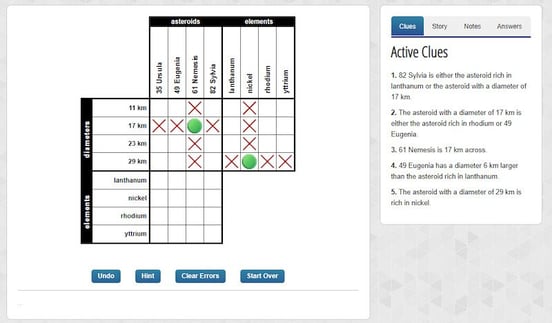
- Difficulty: Medium to hard
- Good for: Language, processing speed, attention*
We’d be remiss not to mention a classic: logic puzzles. In this exercise, you’re given a set of facts and a grid. You use the given information to draw further conclusions and fill in the grid with the correct information.
You can generate new puzzles on logic.PuzzleBaron.com. There, you will find the instructions you need to get started. You can set parameters like grid size and difficulty.
*For an added attentional challenge, play something distracting in the background, such as talk radio or the news.
9. Word Stories
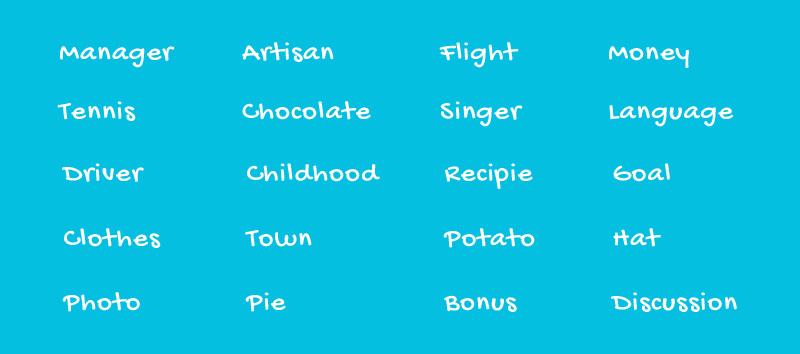
- Difficulty: Low to medium
- Good for: Memory
This exercise is for memory. To complete it, jot down four to five random words (or get some nouns from a random word generator). Make up a little story that connects those words.
The next day, see if you can recall those words with the help of your story.
If you’re experiencing symptoms that won’t resolve after one or more concussions, you’re not alone. And you’re not crazy. On average, our patients improve by 75% after treatment at our center specializing in post-concussion therapy. To see if you are eligible for treatment, schedule a consultation.
Brain Games You Can Play with a Friend
10. Scattergories
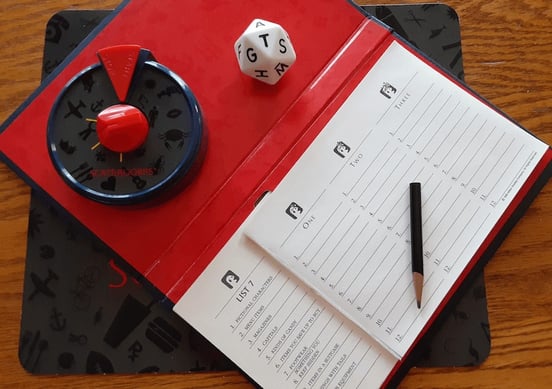
- Difficulty: Easy to medium
- Good for: Language, processing speed
Scattergories is a word game with a time limit (if we’re being honest, that sounds like a lot of the games we’ve mentioned). To play, you’re given a set of categories and a random letter. You have to think of words that fit the category and start with that letter.
When the time is up, you see who has the most complete list. If you came up with the same word as someone else though, that word won’t count toward your score.
If you want to try it on your own, there is a Scattergories generator online.
11. Four-Letter Word Game

- Difficulty: Easy to medium
- Good for: Language, attention, executive functioning
The four-letter word game is a verbal game you can play with anyone willing to help you. Have your friend think of any four-letter word that you could play in Scrabble (i.e., no proper nouns, no slang, no foreign languages, etc.).
Your goal is to guess that word. But to guess the word, you have to propose four-letter words. Your friend must then tell you:
- Whether any of the letters between the word that you guessed and the word that they thought of are the same
- If so, whether any of those letters are in the right position.
For example, let’s say your friend thinks of the word, “blue.” You guess “burn.” Your friend should respond, “two letters, one in the correct position.” You would then use that information to guess another word. If you followed up by guessing “bark,” your friend would have to respond, “one letter in the correct position.” At that point, you know that a first-position “b” is very likely.
Ideally, you will use what you learn from each guess to eliminate wrong letters and hone in on the correct ones. For an added challenge, play the four-letter word game while doing something physical, like walking on natural terrain or tossing tennis balls back and forth.
12. Taboo
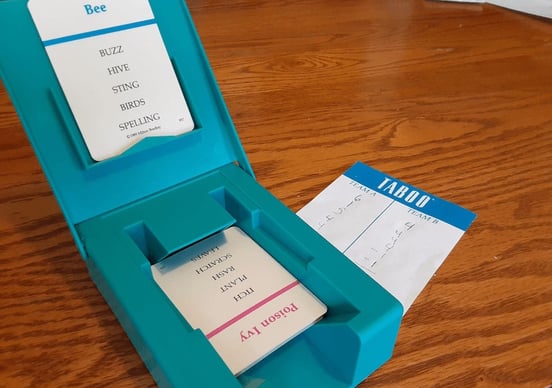
- Difficulty: Easy to medium
- Good for: Language, processing speed
Taboo is a fun game to play with family and friends. If you’re the one giving clues, then your goal is for your teammates to guess the highlighted word without saying any of the other words on the card. If you do, you lose a point. Taboo requires you to describe everyday words more creatively than you otherwise might.
We’d certainly recommend picking up a copy of the game, but you can also play Taboo for free online.
13. Hanabi
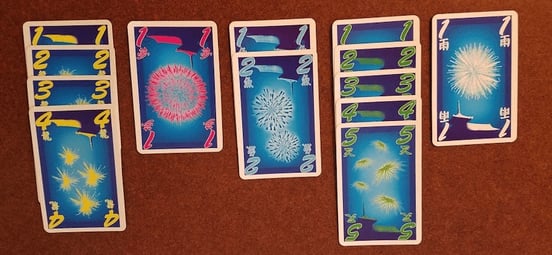
- Difficulty: Easy to medium
- Good for: Attention, memory, executive
Hanabi (a word that means “fireworks”) is a cooperative card game that sounds simpler than it really is. In most card games, you’re the only one who sees your “hand” (the cards you’ve been dealt). In Hanabi, this situation is reversed: Everyone except for you can see your cards.
The goal of the game is to play as many cards in the correct order as possible. But you’re only allowed one of three actions on your turn: giving another player a clue about what’s in their hand, playing a card, or discarding a card.
Successful games require you to intuit why someone told you what they did about your cards, remember what they told you about your cards, and decide when it’s best to act on that information.
14. Sentence Rearrangements
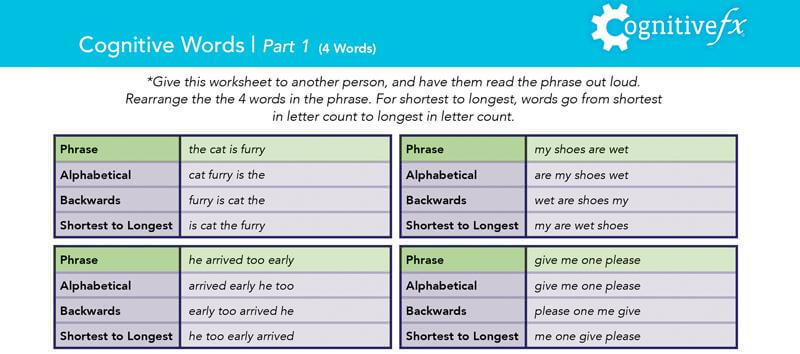
- Difficulty: Easy to medium
- Good for: Language, processing speed
Sentence rearrangements are a great activity to combine with something else (such as balancing on something — just make sure to do so safely if you have balance problems). The concept is fairly simple: Have a friend give you a 4-5 word sentence. Then, rearrange it in order of one of the following:
- Shortest to longest words
- Alphabetical
- Backward
- Longest to shortest.
For example, if your friend says, “Put this in alphabetical order: ‘My mom makes great pie,’” then you would respond, “Great makes mom my pie.”
15. Bananagrams
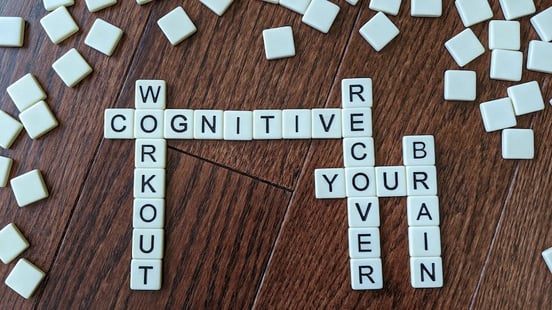
- Difficulty: Easy to medium
- Good for: Language, processing speed
Bananagrams is similar to Scrabble, but you don’t have to wait for each person to take a turn. In fact, it’s a race to the finish line. It’s a blast to play with friends (just don’t get too hung up on winning if you’re playing against people who have never had a traumatic brain injury).
But just because you don’t have company doesn’t mean you can’t use Bananagrams to engage your brain. When no one’s around to play with you, set a timer and challenge yourself. For example, you might try to build ten words in two minutes, but they all have to be at least four letters long. You can vary the parameters for your skill level, but make sure it’s a push for you to finish in time — if it’s too easy, it probably won’t help improve your cognitive function.
16. Strategy Board Games
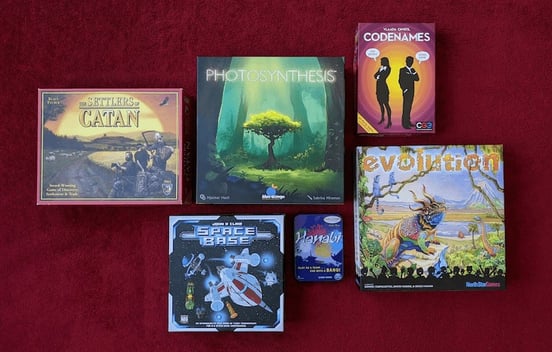
- Difficulty: Easy to hard
- Good for: Executive function
If you think board games are for kids, you may want to take a look at the games which have hit the market in the last few decades. Many of them are made and marketed for older children and adults, although there are still plenty of options for younger children as well.
If you’re hoping to get your brain planning and plotting but want a fun way to engage the whole family, consider these games:
- Settlers of Catan: This is a relatively simple resource management game great for neophytes in the world of board games.
- Azul: This tiled strategy game is a great option if you prefer only a little bit of competitive maneuvering but still want a robust, executive-planning brain workout.
- Photosynthesis: If you’re prone to impatience, don’t buy this game. But if you enjoy thinking through the implications of each move, this is a great game for your brain.
- Evolution: This game of growing creatures and competition at the watering hole requires you to guard other player’s moves. Only play if your friends will forgive you for being cutthroat.
- Space Base: This is the perfect game for players who are getting bored with Settlers of Catan and need something more complicated but enjoy the style of gameplay.
- Power Grid: This complex factory-building operation is only for experienced board game players who aren’t afraid of a little math thrown in the mix, and who aren’t suffering that much cognitive impairment.
- Dominion: This is a card deck-building game that combines strategy with a little luck and has many gameplay permutations.
- Ticket to Ride: This game is a nice, simple board game that requires attentiveness, planning, and a race to the finish.
17. Code Names
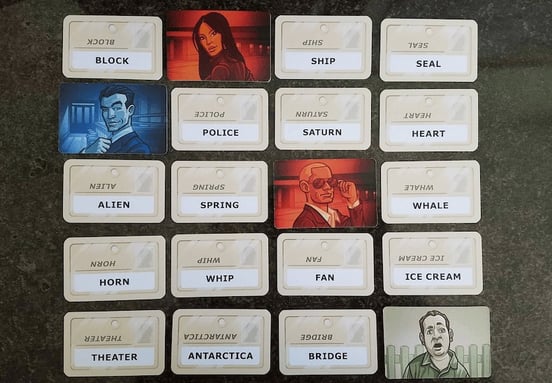
- Difficulty: Easy to medium
- Good for: Attention, executive function, language
Codenames requires company. While you can make it work with three people, it’s really better to play with four or more. One team will give the clue, and the other team will guess the words indicated by the clue.
Here’s how it works: There is a 5x5 grid of randomly drawn cards. The clue giver looks for a single word that could imply one or more of those cards, then tells their teammate the word plus how many cards the clue is for.
For example, say you need to get your teammate to guess “dog” and “horse” but don’t want them to guess “fish.” You might say, “mammal, two” and hope for the best.
18. Bonus: Exercises to Improve Headache Symptoms

Many of our patients who suffer from cognitive symptoms like brain fog and poor attention spans also suffer from headaches. If you experience recurring headaches, then this course is for you. It covers which types of headaches you can get after a concussion, as well as specific techniques for coping with those types of headaches. At the end of the course, you'll know how to manage your headaches at home.
The course features video lessons, light quizzes, printable downloads for self-analysis, and guidance, that all work together to help you understand the headaches affecting you. We also teach you some of the most helpful techniques that we use in our clinic that you can easily do at home.
This is a go-at-your-own-pace style course so that you can review past lessons, track your headaches symptoms, and develop insight into your personal headache symptom situation giving you control of your headaches once and for all. Check out the online course here.
Where to Get Treatment for Post-Concussion Symptoms
For most patients with lingering post-concussion symptoms, cognitive therapy alone (even if you’re working with a trained therapist) is often not enough for full recovery. Neither is playing some games on your own time (although they can certainly help and are worth trying).
Successful treatment of post-concussion syndrome requires a multi-pronged approach that not every clinic or therapist is equipped to provide. If you’re looking for treatment, consult this post on how to spot a good concussion clinic.
As you consider treatment options, keep in mind the ways that Cognitive FX is different from other treatment clinics:
- We are the only clinic to use functional neurocognitive imaging (fNCI), which allows us to determine exactly which regions of your brain were affected by your concussion. That in turn allows us to tailor your treatment to your injury (which is extremely important because damage to the human brain is not one size fits all).
- We have the largest multidisciplinary team trained to treat post-concussion symptoms in the U.S. Our intense program is designed to tackle multiple brain regions at once for the best chance at recovery.
We combine physical activity and therapies with cognitive exercises because both are important for recovery. (Remember the post-exercise cognitive boost we talked about earlier). We heavily leverage a cycle of aerobic activity, cognitive effort, and cognitive rest for more effective treatment conditions.
If you’re wondering what treatment is like, many of our patients have spoken about their experiences, like Olivia, a former figure skater who battled a mysterious chronic illness for years, and Sam, who tried every concussion clinic in Ontario before finding Cognitive FX.
You can find more patient stories and information about post-concussion symptoms and treatment on our blog.
If you’ve been suffering from lingering symptoms after a concussion, we can help. 95% of our patients experience statistically verified restoration of brain function. To learn whether you’d be a good fit for our program, schedule a consultation.


